Leaderboard
Popular Content
Showing content with the highest reputation on 11/12/21 in all areas
-
Ho, ho ho, this is the HKM B-17 G in 1/48 ….it’s a marvelous kit and an enjoyable built. It’s a little bit pity that one can’t see all the interior when the model is finished. But nevertheless you can get a good impression how the crew must have felt when they were on their missions. The only things that I replaced where the resin tires from eduard and the machineguns from Mastermodel. Airbrushed with Gunze Superfine Silver 2 ( extremely nice stuff) and some Alclad metals. enough waffling hope you have fun regarding the pic’s. have a nice Christmas time! Andy62 points
-
from a bottle of resin that is. That and my trusty Elegoo Mars printer. what a wonderful invention What follows is not for the faint hearted. This was yet another of those I had no idea what I had gotten myself into until it was too late builds. As some of you may be aware, I am slowly building my way through a collection of 28 Squadrons aircraft from a Camel to a Wessex. One of the aircraft which was proving a real challenge was the Westland Wapiti. It was a challenge as there just isn't a kit out there. I could probably have butchered an old Frog Wallace, but my chosen scale is 1:48 and there's nothing even close. Nothing. Zilch. Nada. Therefore, if I really wanted a Wapiti I had no option but to scratch one. So I did. The twist to this story is that I scratched a Wapiti from a bottle of resin - I printed my own kit... eventually - I had to design it first, and that threw up a few challenges of its own. However, after wrestling with the software, and several gallons of coffee I had something approaching a Wapiti shaped flying machine The engine was fun to design though. The challenges didn't end there though. Printing such a large beast had it's own set of issues - with the sheer size and geometry of some of the parts there were issues in trying to control warp and shrinkage. The wings in particular put up a brave fight and it took me many, many goes before I got something I found acceptable - but learned a lot along the way. At times it was fun. At times frustrating, challenging, and at times soul destroying, but there were also times when it was very rewarding - particularly this evening when after 11 months of Wapiti-ing, I completed the build and it was added to the display cabinet. Enough rambling. Trials & tribulations WIP here... and shots of the finished article follow What? All this from a bottle of resin? (note: the roundels aren't as pale as they show up here... I have an old camera which doesn't really pick up the colors properly) Glad to be finished but also very glad to finally have a 1:48 Wapiti in my collection. Thanks for reading. Normal service shall resume shortly.43 points
-
Just for fun 1/24 Airfix Sea Harrier off the HMAS Australia, formerly the HMS Invincible home design and made decals40 points
-
My last project, this time I wanted to make a model in markings not often presented. A-7D Corsair II 120th, Colorado ANG. Trumpeter model 1:32 Painted with Hataka Hobby Red. A-7D Corsair II Trumpeter 1:3234 points
-
Just got this one over the line. It's a kit I picked up for a song on Facebook Marketplace a few months back and has been at the top of the stash ever since, because I like the look of it. I was determined that it was going to be a quick OOB fun build and that I wasn't going to be a slave to accuracy, that said a little bit of stuff that wasn't in the box found its way into the mix: Eduard canopy masks, resin exhausts, a bit of Uschi thread for the radio wires and the bendy crosses on the tails came from a Techmod sheet. I did a little bit of remedial work on the engine nacelles that for some reason were moulded to overlap onto the control surfaces (bit weird that), and enhanced the bombs with some thin plastic rod.. Brush painted mostly with Revell enamels (I feel I trust their RLMs more than I do Humbrol's), enamel wash for the panel lines and a rattlecan matt finish. There's some debate out of there about which bits of his plane were and weren't yellow but I didn't get too involved in that, just went with the callouts. It is known though that this airframe didn't have tropical filters fitted. I have to say a very enjoyable kit, I'm happy with the end result, the trench like panel lines didn't turn out too prominent but it does have the look of a diecast model about it. Thanks for looking in!27 points
-
Salutations, Today I would like to present the largest model I've ever made! It is a Be-12PS in Ukrainian Naval Aviation markings. The build spanned 4 months of occasional work due to my constant flux of motivation to continue assembling these parts which fought me at pretty much every step of the way. However after liberal application of filler putty and careful sanding, I got the joins looking smooth enough to paint. I have to say that landing gear door and support assembly was one of the most complex subassemblies I've put together so far and it was a true test of my modelling mettle. The kit came with masks which behaved well. I feel accomplished for seeing this project to the end and giving it a suitably grimy and well used aura! These aircraft have been in service since the 1970s and reportedly, Ukraine still has 2 in service. The rest had to be left behind when Russia annexed the Crimea in 2014. As you can see, this beast takes up a whole half of the top of my drawer display area! I've placed it next to my PB4Y-2 and Revell Arizona tucked off in the corner. 😀 I have plans to make a seascape base for my next floatplane... Thanks for looking and I hope you like it!27 points
-
Hi, I got a bit of a modelling boost through reading Chris Petty’s “Beyond the Blue Skies” which covers the major rocket plane projects and personalities at Muroc Army Air Field/ Edwards AFB from the late 1940’s to the 1970’s. I retrieved Special Hobby's Skystreak and MPM's X-15A from the stash. They seem deceptively simple! If interested the WIP is here Both kits require bit of work around the cockpits. The X-15 has a very detailed cockpit which is totally lost if modelled closed up. Rather than waste it I built up a dolly using bits from the spares box and it will be popped on the stand. Both aircraft broke the world speed records in their time. Three of each were built with each sadly suffering a fatal crash. The Skystreak is modelled as the third aircraft in its final testing days in 1953. The ablative covered X-15 is as per Major Pete Knight’s record breaking flight. He flew it to 4,520 mph in October. It reached Mach 6.72. The effect of the shock waves from the dummy scramjet were not fully appreciated and the rear ventral fin reached a temperature of 2700F instead of the expected 600F. The protective coating was breached and the skin started to melt with the internal structure getting exposed to the superheated air. The hot gases destroyed the explosive bolts holding the scramjet to the aircraft and it fell away. The aircraft never flew again. It was expected that the ablative covering would melt away and cover the windshields so an “eyelid” was fabricated and covered the port side. This was opened after decelerating so that Major Knight could see the runway for landing. Continuing with the Muroc/Edwards Air Force base theme I have also posted a ZELL Starfighter. I built this for the Starfighter Group build in 2017 but never posted it in the RFI. This was a proposed rocket assisted take off idea that placed aircraft away from vulnerable airfields in the event of a surprise Warsaw Pact attack. Eldon Brown was the brave test pilot. If interested the WIP is here eek! (Photo courtesy Lockheed) The X-15 has its eyelid closed Couldn't leave the cockpit to waste Eldon Brown - brave man25 points
-
Hi mates, This is my effort for the F-14 Tomcat Group Build that is just finishing up. It's the 1:72 F-14D kit from Fine Molds, which I acquired by purchasing three issues of ModelGraphix magazine back in 2015. Kind of like the old days when you got a prize in the bottom of your Cracker Jacks, only this promotion packaged styrene sprues - but you didn't get them all unless you bought all three issues! The kit lives up to Fine Molds' reputation - I did not use any putty during the assembly. None. Detail is quite good for 1:72, although I did tart it up with a bit of aftermarket (described below). I left the covers off of the avionics and cannon bays as they interfere with seeing what's inside. The markings are for the special VF-31 display aircraft from the official Tomcat retirement ceremony, a day that will live in infamy. WIP is here. Project: Grumman F-14D Tomcat Kit: Fine Molds kit no. MG 789 2015 Scale: You have to ask? This is me you're talking to! Decals: From Hasegawa kit no. 00931 with some stickers from the kit - the actual aircraft had no stenciling that I could see Resin: Res/Kit Wheel Set RS72-0007 Photoetch: Some bits from Eduard set 73233 (designed for the Revell kit) including mirrors, canopy locks, seat harnesses, cockpit sidewall details, landing gear torque links, brake lines, HUD, and vent covers Turned Brass: Master Model set AM-72-007 Alpha and AOA probes Canopy Masks: Eduard CX532 Paint: Gunze H3 Red, H4 Yellow, H26 Bright Green, H90 Clear Red, H94 Clear Green, H317 FS36231 Dark Gull Gray, H315 FS16440 Light Gull Gray, H11 Flat White; Floquil 110015 Flat Finish; Tamiya XF-69 NATO Black; Alclad ALC101 Aluminum, ALC103 Dark Aluminum, ALC115 Stainless Steel Weathering: This display aircraft was freshly painted for the ceremony and was squeaky clean. I applied a wash to the wheels and gear bays, as well as in the avionics and cannon bays. My decision to not apply a panel line wash resulted in my expulsion from the Modelling Gimmick of the Month Club. I am now officially a heretic. Improvements/Corrections Photoetch details in cockpit - sidewall conduits, seat harnesses Photoetch details on landing gear - brake lines, torque links Turned brass nose probe Resin wheels Homemade decal for "Felix Rules" on the drop tanks - artwork created in Corel Draw Here are the seats prior to installation - these are the kit parts with PE harnesses. Not too bad. Anyway, this was a fun diversion from the putty queen that is the Matchbox Privateer which I shall now have to return to. Drat. Cheers, Bill22 points
-
Howdy all, thought you wouldn`t mind if I shared a few photo`s of the latest addition to my French ( Indochina ) collection My attempt at Special Hobby`s 1/48 Siebel si.204 kit Dressed up to ( loosely🙂 ) represent a SNCAN Martinet used by the French during the Indochina conflict Had the kit hanging about for a while as I thought someone would do some after market markings or propellers....... .......but got bored waiting so thought I`d have a go myself From what little I could find out, they were virtually identical except that some later ones had 3 bladed propellers and varying aerial layouts..... Didn`t bother about cabin layout or details as you can`t see any of it any way but assy`d and painted bits from the kit so there`s something in there Decals were cobbled together from the spares box as were the prop`s Hope you enjoy the pic`s, thanks for looking Cheers Russ19 points
-
Hi, just a quick build is this new tool Airfix Chipmunk in 1:48. Add Brassin wheels and Eduard PE`s. Decals are OOB showing off one of just two camoflaged British Army Chipmunks. WP964 was the sole based in the UK (the other was based in Germany).17 points
-
Dear fellow Britmodellers, here's my 1/72 Special Hobby A-20 Boston with Red Stars. The model was painted with Mr.Hobby acrylics. Photographs by Wolfgang Rabel. Thanks to @Kjetil Åkra, @dogsbody, @DLinevitch for their help in research. This kit was first released in 2007 under the MPM brand. Special Hobby added specific parts for the VVS Version with UTK turret (plastic, resin and etch). Unfortunately the turret transparencies are not as clear as the cockpit glazing, and they don't fit well. The oversized defense gun was replaced with a metal item from Mini World. I scratch-built the life raft in the cockpit with paper tissue. The bomb bay was cut open and loaded with Soviet bombs (from a Tamiya Il-2). Photo-etch from Eduard. Previous owner's markings (RAF?) overpainted. This was a pretty challenging build with poor fit throughout. I'd only recommed this kit to seasoned and very patient modellers. Thank you for your interest, best greetings from Vienna! Roman16 points
-
Finished! Well, not really, but I'm a bit fed up, as I can touch it any more without losing some parts here and there. So, let's call it finished! Even if I'll certainly do some little touch up in the coming days. Here are the pictures: Any comment is welcome!16 points
-
After my 35 years absence from modelling, a second aircraft has landed on the BoB shelf to join the fabric wing Hurricane L1592 (5 weeks ago actually, I find the modelling more compelling than the photography of same!). It's Al Deere in P9398, the Spitfire in which he had the famous 'head on' collision with Oberfeldwebel Johann Illner with both surviving the incident. A common build, sorry guys but it is a nice one for the BoB shelf. Build is OoB except for decals. Questionable Print Scale (so no starboard view) and Tech Mod technical stencils which are excellent. I found the kit lovely in areas and annoying in others. The next AF Spit from this molding will have the raised, upper wing, fixings for the .303 MG access panels instantly cut off and a slight recess drilled! I found the dihedral an issue and it had to be adapted to give the 6 degrees which is as important to the beauty of the aircraft as are it's elliptical wing surfaces. The huge WW1 trenches in front of the ailerons and flaps were filled and scribed as well as possible with my limited but growing experience. The panels lines are huge on this kit and in future I might fill and scribe them if I build again. A Tamiya 1:72 is near completion and I would rate them equally I think? (I just bought another for stash). Also a KP Mk1b is under construction. Me no like this much 🥴 (comments then when this is posted for viewing). After an email conversation with Eduard about tiny 1:44 scale resin Hurricane wheels for their lovely Hurristory 1:72 (you know the ones!), a Mk1 from them is on the way but no time scale. It is coming and it should be a delight when it lands. The Pilot is from the Hurricane kit to replace the Orc that came with the kit (see my Avatar). A bit of blue paper towel and he is ready for the 'off' in the sunny summer that 1940 provided. Big thanks to all you guys, present & lost to us, for the information provided in helping me with this build👍👌 Regards, Lindsey15 points
-
Here's one just finished, part of a GB on another site. Many thanks to JWM here for providing some references. Only aftermarket used were Kits World 3d decals for the seatbelts, eduard canopy mask and some uschi van der rossen rigging thread. Paint used were AK Real Colors. Note that there is krystal klear still drying in the fuselage port holes! Thanks for looking 20211210_180552 by bryn robinson, on Flickr 20211210_180526 by bryn robinson, on Flickr 20211210_180456 by bryn robinson, on Flickr 20211210_180349 by bryn robinson, on Flickr 20211210_180341 by bryn robinson, on Flickr 20211210_180331 by bryn robinson, on Flickr 20211210_180325 by bryn robinson, on Flickr 20211210_180248 by bryn robinson, on Flickr14 points
-
Hi all, After some time away from CAD modelling and 3D printing, I'm back with new products! These are intended as a direct drop-in replacement for Airfix's 1/48 Vampire F3. Postage is, £4 (UK) and £8 (international). Drop me a message if you would like a kit. F1 Conversion - £15 CAD Individual parts breakdown https://www.facebook.com/WellsPropsModels/photos/a.107592737843774/335846051685107/ FB6 Conversion - £15 Long nose (with nose door) New cockpit (with integral ejection seat) Control stick Export variant main wheels As can be seen above, the cockpit is a one peice direct replacement for the Airfix kit part. As an optional extra, I intend to include the external fuel tanks and rockets. FB30/31 - £15 Elephant Ears intakes Export variant main wheels Control stick ADF Nose Bulge Cockpit (and ejection seat) Seamless Exhaust - £4 (+£2.50 postage UK only) Cheers Ben13 points
-
hi all, Some images posted for my good friend Joe in Texas. He's finished his Tamiya F-4B after a little pressure from yours truly 😉, and i think he's made a marvellous job of it. What do you think? Andy13 points
-
alut everyone, Here is the last born to come out of my workshop(in realkity, it has been complted in march 2021), a 1/48 Spitfire HF Mk VIII from Eduard, . I wanted to build this model for a while now, the box art made me want to. The painting is done with AK Real Color references, and the patina with oil paint and pigments. It is a very good model, without flaws, apart from a few joints to fill up here and there, and decals really too thick. You will find the assembly here: https://romandiemaquettisme.forumgratuit.ch/t401-supermarine-spitfire-hf-mk-viii-eduard-1-48 Places with pictures, of, to my taste, is one of my most successful planes! It seems that it is traditional to drink a whiskey when completing a Spit, so Slaìnte (I like my Whisky with ice, don't kill me please XD) That's all for today guys, Have a nice day and best regards Vincent11 points
-
Morning all, This is another fugitive from the recent Phantom STGB, to go with the parade of Phantoms we've had this month! As everybody knows, you can't have too many Phantoms 😉 This is the (in)famous Tamiya 1/32 kit from 2001(?) It's okay but nowhere near modern day Tamiya in terms of fit or accuracy. Its weaknesses are well known and documented but I haven't corrected anything, so weird patches, wrong dihedral, misshapen rear fuselage and grossly undersized nozzles are all there. I used Eduard interior set to improve the cockpit, seats and canopies, which would be otherwise completely devoid of detail. The surface details are good, and the smaller components fit beautifully. Pretty much everything else needed filler and the top wing joint with the fuselage is actually held together with masking tape, as there's literally no contact with the fuselage 🤔 Now the good bits... paint used was MRP Israeli FS colours and boy, are those good paints! Used AK Gauzy Intermediate as a gloss coat and Xtracrylix Flat to finish. Decals were a mix of Warbird stencils and Sky's Decal for the insignia and squadron markings/serial numbers. They all behaved beautifully despite numbering into the hundreds. The aircraft represented is Kurnass 116 of Squadron 201 'The One'. It is based on a documented mission flown on 12 October 1973 to strike Damascus Airport, codenamed RAM. The four-ship strike package (Panther flight) all carried mixed bombloads: three with five Mk117s and three Mk83s, and one with 5xMk117s and three CBU-54 cluster munitions. The resin bombs came from Videoaviation in Italy and they are very highly recommended! The aircraft also carries two Deker (AIM-9D Sidewinder) and two Lavid (AIM-7E Sparrow). 116 confirmed one MiG-21 kill with a Lavid during this mission after Panther flight was bounced by two flights of four MiG-21s egressing the target area. Overall this was not the easy build I was expecting. 2001 Tamiya (the original mould was mid-90s) is not 2021 Tamiya! I really pity anyone who paid the eye-watering £125 RRP for this kit as it's barely better than the Revell kit which retailed at about £45. But you pays your money, etc! It still builds up into this huge and impressive result. As you can see from the bits in the background, this is a very big model! Anyway... It's finished! If you like Phantoms, go and give the STGB some love, I don't think I've seen such a high standard in a group build, which is amazing considering it's time-limited. This build thread is here, in case you're interested in the triumphs and failings of both kit and modeller! Cheers Alan 👍10 points
-
When I posted my Fokker 100 a few days ago I mentioned that I had a second Air UK model on the way and here it is - the Revell BAe-146-100 (the TNT boxing) finished as G-UKJF circa 1993. G-UKJF had a rather nomadic life beginning with TABA Airlines of Brazil in 1983 and ending with WDL Aviation in Germany who retired her in 2012. She was with Air UK from 1990 until 1998. Like the Revell 146-200 the -100 kit is an easy, pleasant build apart from the fiddly undercarriage. I deleted the cargo door on the aft left fuselage and scribed a few panel lines but otherwise the build is OOB. Paint is overall Halfords white with Tamiya and Revell metallics. Livery decals are by Two Six with an Authentic Airliners windscreen and detail decals from the kit sheet. Thanks for looking and as always constructive criticism is welcome. Dave G and finally the two together ...10 points
-
Hi, This is a 1:35 model of the Sturmgeschutz III ausf G, a German assault gun. This is very old Tamiya KIT no. 35014 from the 70s. I made it as a movable model. The additional parts are - the Friulmodel tracks and sprockets, couple of small accessories like grilles, towing cable, jerry cans, ammo boxes, supply carton box. WIP is here: The clip shows how does it run I invites you to see the rest of works on my site "about me"9 points
-
9 points
-
A-7D Corsair II, 356th Tactical Fighter Squadron Green Demons, 354th TFW, Myrtle Beach, South Carolina 1972 Kit: Matchbox Corsair II A-7D (#40101) Scale: 1/72 Paints: Vallejo Model Air Weathering: Flory Models Dark Dirt wash Simple hassle free build, built straight from the box without adding, altering or removing anything. Painted using Vallejo Model Air acrylics. Decals were old and colours were fuzzy but settled down suprisingly well. The kit has toy-like qualities but that was part of the charm - realistic details and finesse are for other builds. Thanks for looking!9 points
-
Salutations to you all dear BM'ers. Advance warning - this is going to be a fairly picture heavy post, just like my usual I suppose, but I've spared you some of the pain as I'm going to put some of them in an RFI. Whats that? RFI ? Yup, I think I have finally beaten this one into submission and completed it. That being said, I had the exact same thought about three times since my last post, so I may have to scrap the RFI idea and do it all over again. I should also warn you that the pictures aren't of the best quality as I had the camera on the wrong setting (again). Anyway, enough rambling - lets get to the action. The first of the home brewed decals went on then promptly came off again when I applied the microstuff as I found that I had mistakenly applied art fixative over the decal instead of an acrylic clear coat, and the fixative started peeling off. Not very fixative then was it? Luckily I had made multiple sheets and got it right about 50% of the time. I don't know why they make the aerosols look exactly the same. I haven't got time to read the labels when there's a build going on have I? Once I had figured out which sheets actually had an acrylic clear I started putting the pretty pictures on the pretty aeroplane. Pretty neat huh? The decals that gave me the biggest challenge were the serial numbers on the rear fuselage. Half of the serial was on the black band while the other half was on the silver dope. Since the serials were black (?), the part on the black fuselage band had a white background, but not so on the part on the silver dope. The solution was actually very simple, though somewhat challenging to execute. I designed the serial to sit partly within a black box. I then printed the serial on both clear decal paper, and on white decal paper. One of these is clear decal paper and the other is white. Don't ask me which is which. Why can't they put the clear decal film on a blue background paper or something? Anyway - my plan was to slice the decal at the edge of the black box - this way the serial on white decal paper would have a white background behind the serial number, and I could use the edge of the black box to align the serial with the black fuselage band - does that make sense? With the decal printed on clear film, I just needed to slice the black box half away and apply what was left of the serial. It seemed to make sense to me at the time. Then, if the plan is executed with some degree of finesse we may end up with a serial number looking something like this. Rinse and repeat for the other side, but in reverse if you know what I mean. Thankfully, there wasn't a lot of colorful bits on this one so the transfer sticking went quite quickly. - Which then brought me to these darned things... the aileron actuators. They were those things I had printed and painted up at the end of the last post. They were awkward because they were so small I could barely hold them in the tweezers. Then after they were fitted, I had to fit the control rods from the actuator disappearing into the wing - from 0.2 mm wire. With the decaling complete, everything was given a clear coat followed by the flat coat - I checked this time - it wasn't Fixative. That allowed me to finish off the rigging on the tail section. Now that all the constructions works were complete (or so I thought) on the underbelly, I could start adding all those greeblies on the top side which were just begging to get knocked off at the slightest uncoordinated movement. Aileron actuators installed, along with navigation lights, then the slat actuators. Oh what fun... and you get to do the same dance on both wings! It was getting so close to the end, I was almost getting excited. Just some more tiny bits to get fitted now - such as the tail lamp on the rudder. The rudder could then safely be fitted and all that was left was to do yet more rigging. I almost made a mistake by attaching the wrong lines but caught the error quickly and managed to rectify it without any damage. There's so many holes on this thing, with so many fairleads, so many rigging lines, and so many attachment points. Who said biplanes were fun? Ian! I splashed out a few months ago and bought a PE sheet of control horns and other biplanery greebles, and used the PE parts on the elevators repeat the fun on the other side.... It's now getting to the point where there is almost no safe way to handle/maneuver this aircraft without a real and present danger of damaging something somewhere. All the rigging is done! At this point I thought I had finished, but then remembered I had broken the control column when I stuffed kitchen roll into the cockpit as a painting mask. Out with the brass and paint again. then more fun drilling out the remnants of the original broken piece Was it worth it? Well, you can just about see it if you really really squint, and point a bright light at it. Using your imagination is much easier. Are we there yet? Not quite. I repaired the bungee cords on the scarff ring, and made sure they were attached to the right components this time, then all that was left was to fit the gunners gun thing. This was a leftover from one of the Bristol kits - I can't remember of it was Eduard or Roden, anyways, after all this time I really couldn't be bothered trying to design and print one when I had one sitting in the spares box. I had found a photo with the gun in this position and kind of liked it so copied it here. - It seemed to make sense as there's a lot going on over on the port side, and not so much here so the gun position adds something... I think. and there was me thinking I had finally finished after all this but once again I remembered something. Dammit! As you are all well aware of by now, 28 Sqn was an Army Cooperation Squadron, and in order to cooperate, they had to pick up messages, lunchboxes, part invites - stuff like that. Just like on the Audax, they needed a hook to grab the lunchbox. 0.5 mm tube with some 0.2 mm wire forming the hooked part. I had thought about not telling you lot about the hook and just plodding on in the hope no-one would notice, but that gremlin inside my head kept gnawing at me... Then fitted into position using whatever I could find - which happened to be a piece of the Wessex tail rotor mechanism I printed so many moons ago. A small length of thread serves as the rope attachment. I ran superglule up and down the thread while holding is taught so that the hook appears to "hang" when she's the right way up. I then managed to turn here over without breaking anything off. What a relief. Then once more I thought I was finished. Really. I think I am. I can't think of anything else that I've missed so maybe I have actually finished this build. What a weird feeling - two builds completed within a week or two - and this one only took 11 months! That's pretty quick for me innit? I suppose you want to see some photos of the final article now don't you? Okay then. Giorgio - this is for you... I even drove down to Walmart this afternoon to buy some blue card to use as a backdrop because you're always complaining... if it's not complaining about no paint, it's complaints about the backdrop. Always complaining. Is this better Giorgio? And one from the rear... sheesh, how we miss Ced these days... one more just for the fun of it. I'll post more over in an RFI. Even stranger - I've now finished two builds within a week or so - and I don't have any other builds on the go. What to do? I'm at a loss. Guess I'll need to search the stash - all 5 kits and see what's next for the bench RFI over there... one thing's for sure... I'll never be buying another kit from this manufacturer again.9 points
-
Guys, this is the end, ready for the new owner I hope to find on the auction! Please, keep fingers crossed! Now I am going to switch to a tall ship, as Cutty Sark 1:96 has been on the waiting list for few year... Regards and see you in maritime section7 points
-
7 points
-
You sure Rob what about that little submarine you started a while back. I was not happy with the way the layer of making waves had dried it looked to white all over think I may have put it on a bit thick. So I painted over using a hairy stick and some old Humbrol paints to use them up blue and green then added some of the other small deck stuff I also started on the deck rails above the barbettes so many bends and curves I had to split them down to small sections to make them easier to fit. Then I started on the wake on the opposite side working for a small time on rails and wake so as not to have the optivisor on for to long. And a bit of a comparison of the 8 barrel Pom Pom kit part on the boat and the fitted Atlantic PE one. Stay Safe beefy7 points
-
Three down, two and a man and a base to go. Here’s the Revell version done and dusted:7 points
-
Saab 340 was a twin turboprop airliner designed for short-haul flights and regional air traffic. The manufacture and marketing of the plane was a joint operation of the Swedish Saab and the North American Fairchild Aircraft Corporation. A total of 430 planes of the A and B versions were built until 1998 when the production of Saab 340 was ceased. When I learned that the Arctic Decals had made a set of Finnaviation's Saab 340B in a special Santa and reindeer livery I decided to model that version of the plane. The only kit available in 1/144 scale was Welsh Models' Saab 340. It was, however, wholly made of resin and not vac-form as usual. The kit was quite simple to build but the quality didn't quite reach the level of the best resin kits on the market. There was some dry fitting, sanding and puttying to be done but the assembly was by no means challenging. Quite a big hole had to be drilled to the solid resin nose for the necessary weight. Otherwise the model would have been a tail sitter. Additionally, I scratch built many extra details to the model. For instance I cut the cockpit windows from a spare set of Authentic Airliners decals to make the cockpit look more, well authentic 🙂 As usual I first primed the model with Mr. Surfacer 1000 spray. Then I painted the whole white model with Tamiya fine surface primer coated with Tamiya gloss varnish spray. Christmas is already around the corner and hopufully all "good modellers" know that Santa Claus lives in Finnish Lapland. So, with this model of Santa's Express I'd like to wish all my colleagues Merry Christmas The small size of the Saab 340B can be clearly seen in the comparison with the DC -10 The Finnaviation Saab 340B at Helsinki Airport (the photo is courtesy of Mr, Teemu Tuuri from Finnish Aviation Photography)7 points
-
That would be an improvement. You should see what I'm like at the start of the day especially on the Sunday morning at Telford. I was once described as having the complexion of German WW1 lozenge camouflage, well, the purple and green bits anyway. Where's that foaming at the mouth emoticon? Martian 👽 (Not doing mornings since star date forever!)7 points
-
I treated myself yesterday. Technically it doesn't break my rule about not buying any more kits, because it is to convert one of my existing Aoshima MGBs. I ordered it with a set of resin V8 alloys, so at some point I hope I'll have a half-convincing MGB GT V8 on my shelf.7 points
-
Or the Northern Wurzels,more commonly known as Oasis.😀7 points
-
Yeah that's pretty much where I'm at. I couldn't get into the edges but I've managed to shift the worst of it and then touch up the framing, doesn't look bad to the naked eye. Anyway, the bird is finished. I'm happy enough with it, it's been a fun build and it is a nice looking plane. RFI pics and maybe a bit of commentary later. Many thanks to everyone who's looked in on this one.7 points
-
I’ve also just started to work on the Count standing in front of his aeroplane. I’m building him from the parts in the Eduard 1/72 “RFC Crew 1917” set, trying to get the pose right:7 points
-
So I got as far as step 14 of the instructions and still no cockpit! On with the landing gear... The nose gear well is divided into its constituent walls. Nice if simple detail inside but they have the big LN2 dewars in the nose gear well. As with the other components so far, these fit together seamlessly. Meanwhile, further back... The main gear wells are also built up by their walls. I guess you could add extra detail here if you were so inclined. Again, seamless fit of all these components. This is a simple and very easy-to-build exercise so far, I'm motoring through it. Certainly looking forward to the engines now! I've found one mistake in the instructions! Check the parts I've changed - you can recognise the correct handing of the leg halves by the oleo links lining up on the correct side. Take note! On the sprue this will make sense: These are the two halves the instructions would have you put together - but as you can see, the torque link hinges won't match! Part 87 goes with 88, and Part 91 with 90. Anyway - all the gear parts assembled, tidied up (the joins need smoothing but otherwise it all fits together fine) and ready for primer. I even had time before sundown to do prepare the cockpits! They finally appeared at step 19 of the instructions Again, sorry to sound like a stuck record, but the back bulkhead on both cockpits fitted perfectly and they both slot into the fuselage snugly. The kit seats are a bit weak in detail, but not terrible. The moulded belts look fine for this scale. In any case, I'd already bought the Pavla seats anticipating a much worse kit than this. This is Pavla - they also fit the kit perfectly so no worries about compatibility. You don't have to remove the riser moulded to the floor of both cockpits. Well, all the interior priming is done, looking forward to some paint tomorrow! Although I am already a fan of this kit, it's looking like great value for money right now. Thanks to Jumblies and Jadlam, both my kits cost under £75 delivered. Though I'm sure someone will say 'for that price, they could have included bombs'7 points
-
6 points
-
Hi All, I thought I'd add a second build thread along with my current Skua WIP, as I've got a sneaking feeling I might need some light relief from that build , so I'll see how I go with 2 separate WIPs for the moment! This will be my 3rd build of an Airfix Hurricane (the others being a BoB Mk.I, and Dickie Cork's Sea Hurricane), so the kit holds few surprises (which is part of the attraction!). Here's the box art: Here's the sprue shots: Both transparencies and decals look nice: I've got a Yahu instrument panel, masks and Eduard seat belts: I'm going to complete as the box scheme, which is P2638, flown by Sgt F H Dean of 274 Sqn, based in Sidi Barrani, Egypt 1941: Here's a photo of the aircraft, along with Sgt Dean: The spaghetti scheme will add an extra level of interest to the colour scheme, so I hope I can do it justice - there's also some lovely detail in the photo showing wear and tear, which I shall do my best to replicate. Inspired by the photo, I'm also going to open up the panels on the port wing to show off the provided machine guns. I've already made the cut, which you can see here: Here's the finished article, which looks acceptable to my eye. After a very busy few weeks it's nice to be back at the bench, so I'll be working on this and the Skua today and tomorrow - wish me luck! Thanks for looking, Roger6 points
-
Hi Guys, This is my last model...beast. Yes a proper beast....77.5 cm!.It has been a proper joy to built it,e even if its dimension represented an issue for my working space.I didn't have any particular fitting issue.I managed little gaps with some filler.I tried to reproduce the exausted smoke with cotton and sprayed paint.This is my 4th Revell kit, and I am happy to say that even if sometime I accounted fitting issue, the variety of subjects this company offers in the market is very unique.It would be great if company such as Tamiya did the same.Your comments and advices are always welcome.Thank you!6 points
-
Greetings Comrades! For the first time, a Soviet machine came out of the Bizzinisky Production Factories, the people's machine, the Glorious Mikoyan-Gurevich MiG-21 SMT, made by the ally Eduard! The painting is done with Tamiya acrylics, the patina with basic oils. The assembly is unsurprising and very pleasant, even if I took a year more or less to complete this machine (shame on me); Building is here (build also last summer (2020) like my 109 G14) : https://romandiemaquettisme.forumgratuit.ch/t359-mikoyan-gourevitch-mig-21-mt-smt-eduard-1-48-concours-fighter Without further discussion Comrades, the Glorious Images, which will shake the spies capitalized, slipped among us: That's it my friends, Have a nice day Vincent6 points
-
The third aircraft of the Lithuanian aircraft designer Antanas Gustaitis - ANBO-III ANBO-III - light training and reconnaissance aircraft was built in 1929 for the Lithuanian Army. It became the first aircraft of Lithuanian design to be built in series, with two batches of four aircraft produced in 1930 and 1931 Crew: Two Length: 6.90m Wingspan: 10.55m Wing area: 18.20 m2 Engine: 1 × Walter Mars I 9-cylinder radial, 108 kW (145 hp) Maximum speed: 185 km/h6 points
-
6 points
-
6 points
-
Few days radio silence, devoted to the etching drawing. Each time I do one of these, I forget how much work it is. Not only deciding the exact dimensions of each item, not always correct of even included in the GA drawings, but also how to produce brass pieces that can be both etched and also assembled to create some semblance of the object in question. In my hands thIs is certainly an iterative process with a £100 cost if I get it wrong, so not to be rushed. For some items, drawing isn't sufficient, I also need to trial fit. Here is the wheelhouse brass cladding tested out in paper, 4th iteration. the middle side panels slope then switch to vertical where that horizontal line is, interesting stuff, supporting a curved windbreak for the early boats For those that haven't read my other build threads, I etch in 18 thou brass (0.45 mm). For 1:48th scale, this thickness seems to work and allows good relief for rivet detail etc. It's also a thickness I'm used to and it (mostly) silver solders without melting. The minimum line thickness you can etch is the same at the thickness of the brass, so ~.85 inch at scale. This limits really super fine detail, but overall I think it creates the right image. The rivets have 0.7 inch (full scale) heads, smaller and they disappear when etched Here is the finished artwork with the red joining lines in a support frame with the scale included. To understand the drawing, you need to remember that black means leave alone, white etch through, red half etch from the front, cyan, half etch from the rear. 90 degree fold lines need to be the same width as the brass thickness. Red joining lines are 0.02 inch wide One thing I'm trying here that is new is the slots you can see in the top margin of the sheet. My idea is to use this margin piece to create a square frame to weave the Carley float base net, it may work.... About 200 pieces in total comprising: The torpedo tube frames and sloping supports. These frames are only 6 inches high, I've very nervous about folding such narrow pieces, will need a frame made to control it Wheelhouse armour sides The windbreak Deck access opening frames for engine removal etc Canvas deck edge frames Scuttles and deck lights Circular hatches 924 inch and 20 inch, the upstand will be brass tube section Torpedo loading saddle frames Cavitation plates Lower bridge door, hinges and frame And a few tiny bits such as the mast frame and base, gun sight, nav light boxes etc A lot of this stuff can of course be scratch-build, but as the cost is fixed per sheet, I may as well fill the A5 sheet, getting more lazy in my old age This will get sent off on Monday, time for me to consider it tomorrow and hopefully remember what I've inevitably missed off Cheers Steve6 points
-
Ready? Set! Go! First set done Second set done All set done! So I did the marathon... and become last concurrent by far! Like they all say... its not how it starts... but how it finishes... anyway I think they all wrong... because I barely finish anything! ...well at least this stage is done...its not to bad, and did some free fitness.... next... Cheers LM6 points
-
With many of my other experimentals so you can see its size This was the future – once upon a time. The AW 52 was originally conceived as a bomber during WW2 but afterwards this was changed to a 6 engined airliner. It was preceded by a glider but as this had its limitations a twin engined version was designed to investigate the higher speed area of the flight envelope. Two prototypes were built. The first had Nene engines and the second had Derwents. The first, TS363, first flew in November 1947 but was lost in a crash after suffering uncontrollable pitch oscillations. Apart from investigating the flying qualities of a tailless aeroplane it was also used to investigate the possibility of maintaining laminar flow over much of the wing surface. To try to achieve this a special aerofoil was used and boundary layer air was sucked into a slot ahead of the elevons but without success. As for the model as soon as I learned of its existence I had to have one. As they say, be careful what you wish for! It has its good points. It’s a kit that I never expected to see and it makes up into fairly accurate model. The engine nacelles and main u/c should be located further outboard and the aerofoil section bears no resemblance to that of the a/c. The downside is that it is a nightmare to build. It is overly complicated with much internal detail that cannot be seen and almost nothing fits. I cannot believe that anyone tried to assemble one before it was released or if they did it was with the cynical attitude that idiots like me snatch at something that they knew would be unlikely to come along again. Some specific points… Starting with the cockpit interior one is directed to fit a component that does not exist. The hole in the floor for the control column is in the wrong place. The seat is too low. It is modelled without the support structure underneath. I didn’t know about this structure until later on after I had solved the problem by glueing it to the upper fuselage section instead of the cockpit floor. If glued to the floor the pilot's eyeline would be about level with the edge of the cockpit. There is a lot of PE for the cockpit instruments and also some 3D decals which appear to do the same job and the instructions are not much help. It's all a waste of time anyway as none of it can be seen. Joining the wheel halves together it appears that one half should have spigots that fit in to holes in the other half. It doesn’t. Both halves have holes. There are two quite detailed engine models to be assembled but only enough combustion chambers for one. It doesn’t really matter as only the front section is visible if you look down the intake. If you can think of a way to fit the engine nozzles after painting the model it would make life easier Fitting the pieces that make up the internal portion of the intake involved much cutting, Milliput and bad language. There was a CAD drawing of this in the Rumourmonger section showing the parts fitting neatly together so how it got so wrong in real life is beyond me. The cockpit, engines and wheel bays fit into the lower half of the centre section and the upper section is then fitted…except it doesn’t. Several things prevented this and so I took my sanding block and ground away at the internals until it did fit. The wheel bays were the worst culprit and I was pleasantly surprised to find that I had not gone through to their internals. Once that is done you have to fit the outer sections to the centre section and become aware of two problems. The first is relatively trivial in that the wing section bears little resemblance to that designed by the RAE but the second is close to a showstopper. The wing sections of the centre and outer wing do not match, and not by a small amount either. The outer section is much thinner. (At this point it was all too much and the project was consigned to the shelf of doom for several months). I got around this by cutting away the rib at the inner end of the outer wing until just the wing surface was left. I then replaced the bits I had cut away with several ‘pillars’ cut from thick sheet which forced the upper and lower surfaces apart until a reasonable match was obtained with the centre section. The wing surfaces have some nicely engraved panel lines which have to be filled as the real aircraft had very smooth surfaces to try to achieve laminar flow. There should be slots ahead of the elevons but there are none. I thought that cutting these would be beyond me and settled for decals instead. There are a couple of problems with the canopy. This is offset to one side so it means that one side of the cockpit is longer than the other but for the model a ‘normal’ one is provided which means some careful scraping of cockpit and fuselage followed by filler to get it to sit without it leaning. I do not think that the rear of the canopy is correct. One last problem presented itself. The u/c legs have spigots to fit into mounting holes but there are no holes for them to go into. I was most surprised and relieved that it required no adjustments to sit level after fitting the landing gear - about the only thing that went right. I discovered this website that has a lot of pictures of the aircraft and a copy of the article about it which appeared in 'Flight' in December 1946 https://ww2aircraft.net/forum/threads/armstrong-whitworth-aw52.49979/ Thank you to Dave Swindell and David Womby for providing information about the seat. It is here for anyone who needs to see it https://www.britmodeller.com/forums/index.php?/topic/235101803-armstrong-whitworth-aw-52-cockpit/ Finally - despite all its issues it does make up into a nice model which looks 'right'. The finish is Halfords 'Appliance White'. It needs as much weight as you can pack into the nose. All I have to do now is find somewhere to put it. It is rather large. (edit: picture added to show how much space in takes up in my display cabinet) Time for a lie down in a darkened room Edit: Jan 2023 I have seen another one built. The builder said that he did not bother with most of the internals as they were completely hidden once assembled. He also fitted the outer wing panels to the centre section before joining them as I did. This left a gaping hole along the leading edge which was then filled with Milliput. John6 points
-
New boxing by AMP - ref. ? - E.E. Canberra B.2 Source: https://www.facebook.com/mikro.mir.dnepr/posts/4822261047851593 Box art V.P.6 points
-
Sorry, its a poor photo. But this Sunbeam was at the rear of Norwich Airport yesterday, Alpine or Tiger?6 points
-
Hi all, I know it's been aaaaages since I posted here, but I haven't been idle; just busy enough that I've mostly only posted to Instagram for the last two years because it's just the lowest friction avenue. But as the year ends I've been taking proper photos of a lot of models. I'll probably make a single thread for most of them, but this one might interest folks on its own. It's the JPG Productions 1:144 scale Moldy Crow resin kit, mastered by Nicholas Sagan (aka Cosmos Models). It's currently out of production, but JPG has said he may bring it back in the future. I actually picked it up years ago, and made a start out of it 3 years ago, and then it sat unfinished for 3 years because I couldn't find a good base color. Well -- that all changed when I bought an airbrush and the entire line of Archive-X acrylics. Which, by the way, are *AMAZING*. The slightly paraphrase the immortal words of Ferris Bueller -- they are so choice. If you have the means, I highly recommend picking them up. The three year break turned out to be a good thing, because this is the first resin kit I've completed; it took a lot of work to build it, from lots of filing and filling to get parts to fit, to completely rebuilding the wing-attachment, using brass and my Proxxon micro-mill setup. I took a lot of inspiration from game artist Jason Lewis's digital Moldy Crow model he built for his personal project remaking the first level of Dark Forces. It is, without doubt, the most detailed digital model of the Crow ever made, and a fantastic extrapolation of the ship from its distinctly low-polygon origins. Check it out at https://www.artstation.com/artwork/A929GX Jason included a mechanism for adjusting the wings, which I adapted as an added detail on my build, made from steel music wire, brass tubing, and cast resin greeblies. I added a lot of additional detail to the built with cast resin greeblies which I molded from various Bandai kits, and I also completely scratch-built replacements for the sensor arrays on the front of the wings, which were extremely fragile as included with the kit. The replacements are also a lot sharper. I also replaced the kit-supplied barrels on the belly cannon with machined brass Hurricane Mk IIC - Hispano Mk I cannons from master-model.pl Finally, I replaced some of the piping with 1.5mm braided silver hose, a motorcycle kit up-detailing part. Painting Details I primed it with Mr Surfacer 1500 Black, then applied Vallejo Model Air White for pre-shading under the base color coat. The base color is a mix of AX-020 Rust and AX-041 Roof Brown, with accented panels misted over with AX-016 Earth or pure Roof Brown. The red accents are a 1:1 mix of AX-025 Caboose Red and AX-026 D&H Caboose Red. The contrasting rear side panels are AX-008 SP Dark Lark Grey, and the sensor antennas and belly cannon barrels are AX-013 Grimy Black. The sensor fins in front of the engine pods are AX-007 SP Lettering Grey (which is one of my favorite colors in the whole Archive-X lineup). I used the Vallejo Metal Colors line for the grills and actuator rods, as well as dry-brushed metallic highlights on top of the Grimy Black. Mostly bits of Gun Metal, Magnesium, and Duraluminum. Without further ado, the Moldy Crow.6 points
-
SAAB J-29 Tunnan. Heller 1/72, Maestro PE, Master pitots, Aires resin main wheels. Finished with Vallejo Metalcolour acrylics and Print Scale decals Thanks for looking AW6 points
-
OK, you asked for it, back to the Naughty Corner, where last I heard @corsaircorphas been experimenting with hydrogen and matches. 🎵 Fire brigade, get the fire brigade, see the corner start to really burn🎵 Martian 👽6 points
-
As Johnny Winter once said: "I'm still alive and well!" I spent an entire 15 minutes on the Privateer today. Although this doesn't look like much yet, I worked on the framework that held the gunsight and the bulletproof glass on the waist turrets. More to come...the hand grips look like they came from a motorcycle. As I think about it, I just need to finish the turrets, add the tyres and props, and fiddle around with the antennae and she'll be just about finished. I think? The vacuform blisters for the waist turrets look like they might be a struggle, but they will have to do as I have no others. The vacuform bits for the top turrets will be fine, and I haven't looked yet at the ball turret in the nose and the tail turret. I have some extra for these, since I've got what came in the Cobra set plus I have the Squadron (Falcon) bits too. Is it possible to wrap this up by the end of the year so I can include it in this year's version of Uncle Navy Bird's Complete Waste of Time? Maybe! Cheers, Bill6 points
This leaderboard is set to London/GMT+01:00





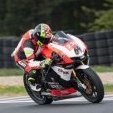

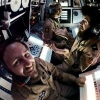

.thumb.jpg.d17ff607fc7e89ed057e63fcb6f2a888.jpg)
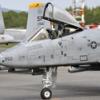

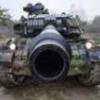
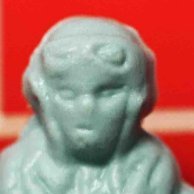
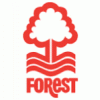
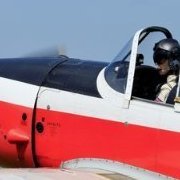
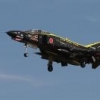
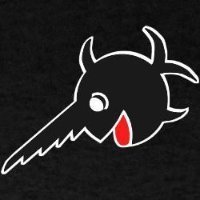

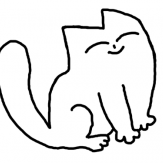
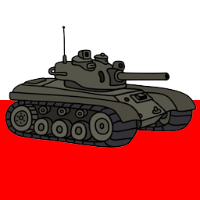


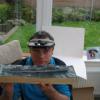

.thumb.jpg.d3635a7ef6507d35f372dd09671fe96f.jpg)



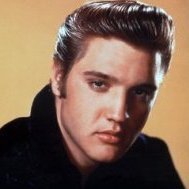

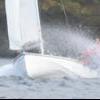

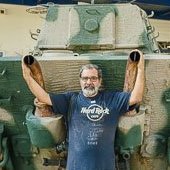

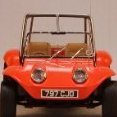
Wedge-TailedEaglePortraitRaptorDomains.thumb.jpg.41a306d3445a68f0f2df773e01776ea6.jpg)